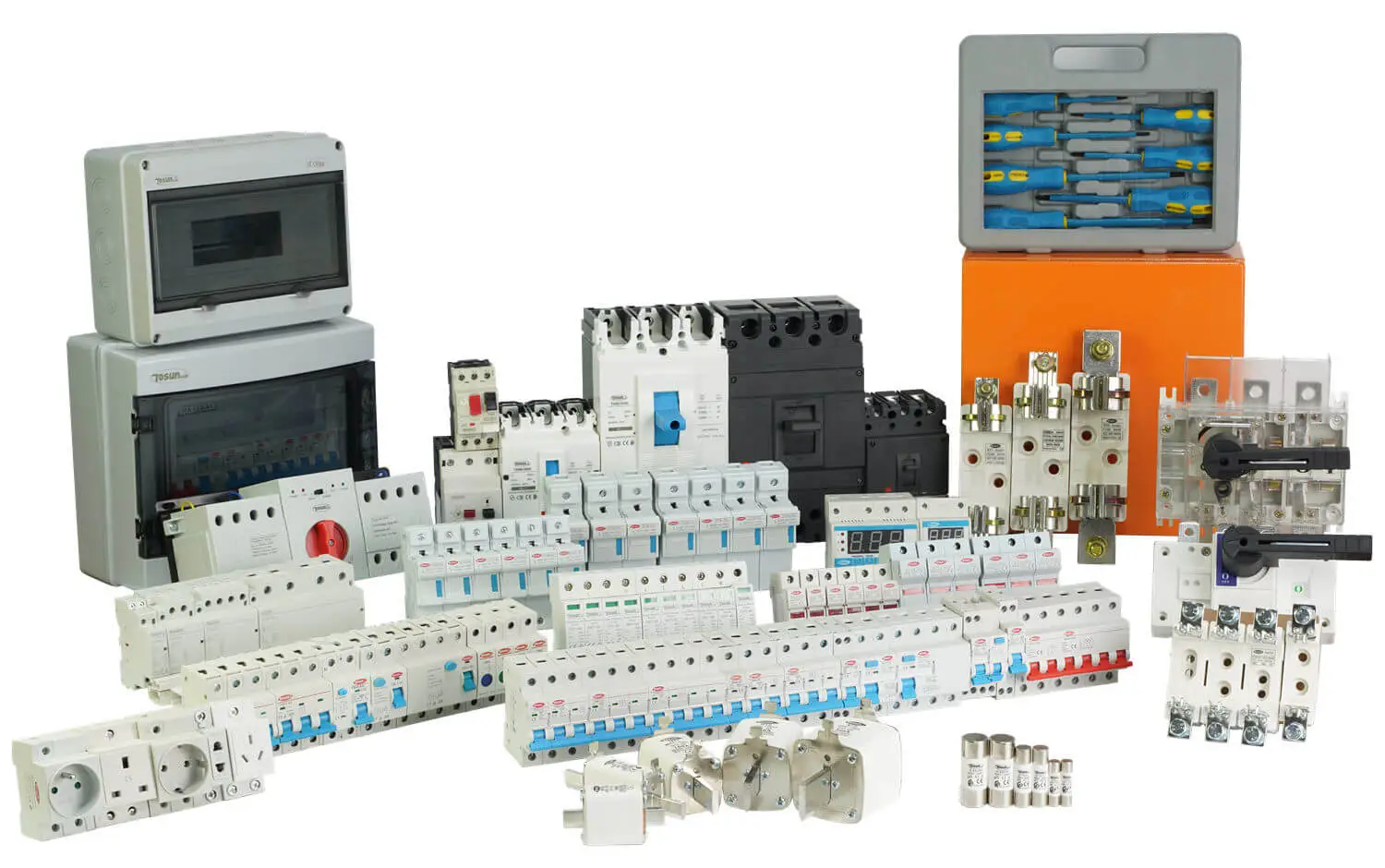What Is the Difference Between AC MCB And DC MCB?
Table of Contents
ToggleMiniature Circuit Breakers (MCBs) are crucial for safety in electrical systems. They prevent overloads by interrupting the circuit when necessary. However, there are important distinctions between AC MCBs and DC MCBs.
In this guide, we’ll explore their unique features, uses, and key differences to help you choose the right MCB for your needs.
Key Differences Between AC MCB and DC MCB
The following table highlights the main differences between AC and DC MCBs based on structure, applications, and technical specifications:
| Feature | AC MCB | DC MCB |
| Current Type | Alternating Current (AC) | Direct Current (DC) |
| Arc Suppression | Handles arc interruption more easily | Requires larger arc suppression mechanism |
| Applications | Used in homes, offices, and AC circuits | Suitable for solar, battery, and DC circuits |
| Breaking Capacity | Lower, due to easier arc suppression in AC | Higher, to manage steady DC current |
| Polarity Sensitivity | Not polarity sensitive | Polarity sensitive |
| Lifespan | Longer in AC due to arc dissipation | Shorter as DC arcs wear components faster |
Design and Functional Differences Between AC and DC MCBs
Arc Suppression
In AC systems, the current naturally crosses zero, making it easier to control the arc formed when a circuit is interrupted. An AC MCB is designed with this zero-crossing in mind, so arc suppression is less demanding.
In contrast, DC MCBs need larger arc chutes or magnets to handle steady DC current since it flows in only one direction. These components dissipate heat and extinguish the arc, ensuring safe interruption.
Polarity Sensitivity
AC MCBs are not polarity-sensitive and can be installed without worrying about directional currents. However, DC MCBs are polarity-sensitive due to the one-way current flow in DC systems.
For this reason, DC MCBs are often marked with “+” and “-” symbols to show correct installation. Reversing polarity can lead to overheating and even failure of the breaker, so observing polarity is critical with DC MCBs.
Applications and Environments
AC MCBs are commonly found in homes, offices, and other AC-powered environments. They are ideal for general-purpose electrical protection in areas where the current alternates regularly.
DC MCBs are vital for renewable energy applications, electric vehicles, and backup battery systems, where direct current is constant and continuous. In these setups, DC MCBs protect against overheating and other safety risks unique to steady currents.

Tosunlux provides both AC and DC MCBs to meet your project requirements. Get a quote for wholesale options today!
Why Choose an AC MCB?
An AC MCB is generally more affordable and longer-lasting in standard residential or commercial settings. Because AC current alternates and decreases to zero, the MCB faces less strain in arc suppression, meaning the device’s parts last longer. AC MCBs are ideal for home wiring, commercial lighting, and basic appliance protection.
Example Applications for AC MCBs:
- Home Lighting and Outlets: AC MCBs provide circuit protection for home lighting and wall outlets, automatically cutting power during surges.
- Office and Commercial Buildings: Protects electrical devices, lighting, and HVAC systems in AC circuits commonly used in commercial spaces.
- Basic Appliance Protection: Prevents overheating in household appliances, such as toasters, coffee makers, and microwaves, during power spikes.
Why Choose a DC MCB?
DC MCBs are essential in applications where direct current flows steadily, like solar panels, battery storage, and EV charging stations. Unlike AC, DC doesn’t alternate or reach zero, making it harder to suppress arcs.
DC MCBs have specialized features, like larger arc chutes and polarity markings, to ensure safe interruption. While they are generally more expensive, they are necessary for the safe operation of DC systems.
Example Applications for DC MCBs:
- Solar Installations: Solar systems generate DC power, which requires DC MCBs for safe circuit interruption, protecting both the panels and connected devices.
- Electric Vehicles (EVs): EVs use DC to charge and power the vehicle. DC MCBs ensure safe current flow and protect against overheating.
- Battery-Based Systems: Battery storage setups, from home backup batteries to large data center systems, rely on DC MCBs to manage steady power flows.
Demand Trends and Industry Data
Demand for DC MCBs is growing as the shift toward renewable energy, electric vehicles, and backup power storage accelerates.
According to C3 Controls, the market for DC circuit protection products is increasing at an annual rate of 5%. Solar and battery installations now require reliable DC MCBs for safety and functionality.
As more industries rely on sustainable energy, DC MCBs will play an essential role in ensuring safe and efficient electrical systems.
Summary of Key Differences and Uses
AC MCBs are best for standard residential or commercial circuits. They handle alternating currents efficiently and last longer due to simpler arc suppression.
DC MCBs are essential for applications involving direct current. They manage constant flows safely but have a shorter lifespan due to the higher strain of arc suppression.
Both types of MCBs are critical to modern electrical systems, each with unique features suited to their specific current type.
FAQ
What’s the main difference between an AC MCB and a DC MCB?
AC MCBs handle alternating current, while DC MCBs manage direct current. DC MCBs require larger arc suppression systems.
Why is arc suppression harder in DC MCBs?
Arc suppression is harder in DC MCBs because DC flows in one direction, making it difficult to break the arc. DC MCBs have enhanced arc chutes to control this safely.
Can I use an AC MCB in a DC circuit?
No, using an AC MCB in a DC circuit is unsafe due to inadequate arc control for steady current.
Are there symbols to identify AC and DC MCBs?
Yes, AC MCBs have a sine wave symbol, while DC MCBs show a straight line or plus/minus symbols for polarity.
Which is more durable, AC MCB or DC MCB?
AC MCBs are typically more durable, as alternating current reduces arc wear. DC MCBs face greater arc strain.
Tel: +86-577-88671000
E-mail: ceo@tosun.com
Skype: tosunelectric
Wechat: +86-139 6881 9286
WhatsApp: +86-139 0587 7291
Address: Room No.1001 Wenzhou Fortune Center,Station Road, Wenzhou, China
REQUEST A QUOTE
WhatsApp us
 : +86-139 0587 7291
: +86-139 0587 7291 English
English Español
Español Русский
Русский Français
Français العربية
العربية Português do Brasil
Português do Brasil Українська
Українська Türkçe
Türkçe Polski
Polski Nederlands
Nederlands Italiano
Italiano Bahasa Indonesia
Bahasa Indonesia हिन्दी
हिन्दी اردو
اردو አማርኛ
አማርኛ Հայերեն
Հայերեն ไทย
ไทย Монгол
Монгол فارسی
فارسی Shqip
Shqip Ελληνικά
Ελληνικά


